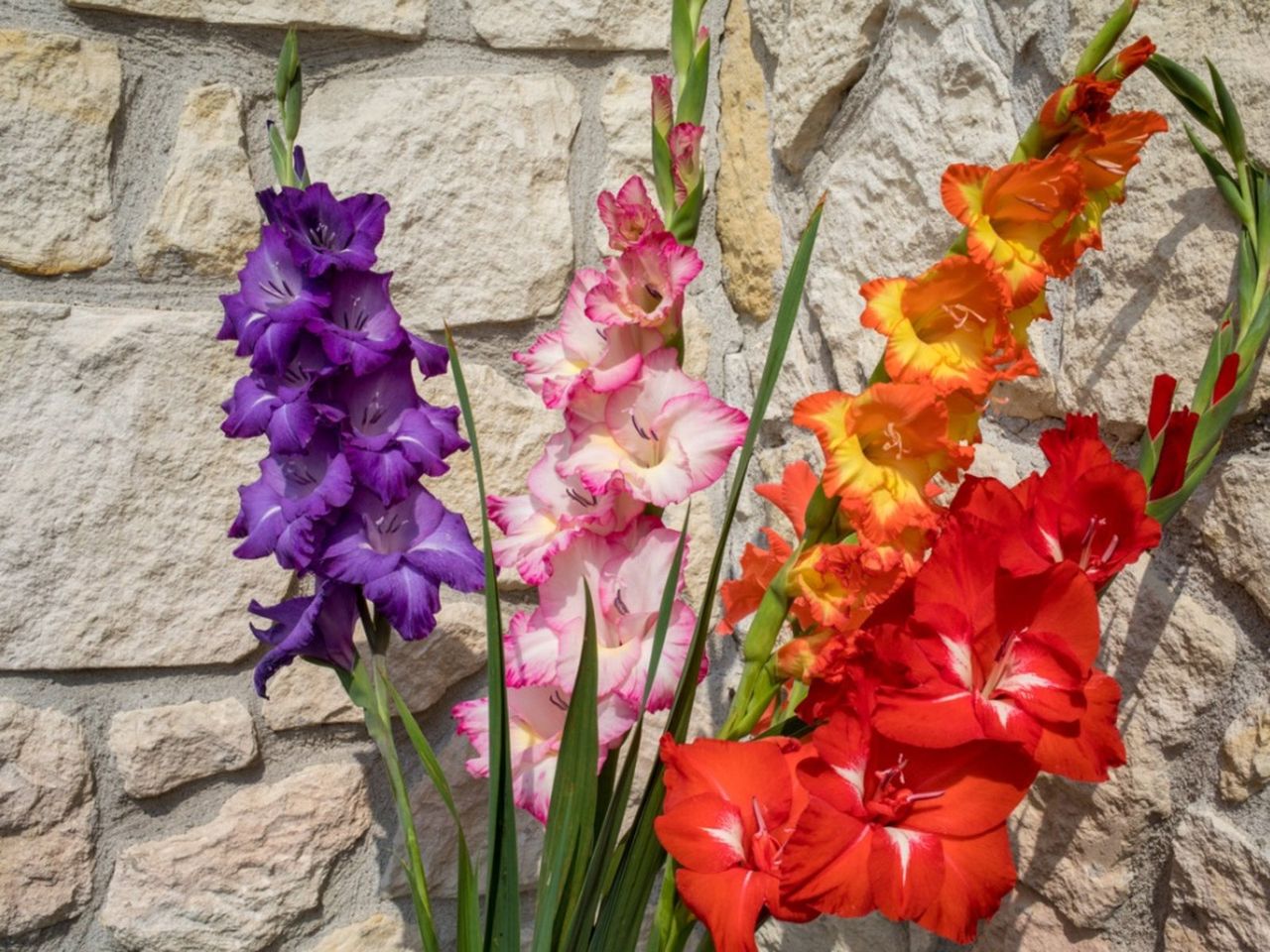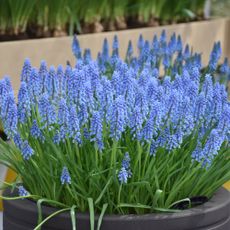Top 10 Questions About Flower Bulbs
Learn when to plant bulbs, how deep, and everything else there is to know about bulbs for beautiful flowering spring and summer additions to your garden.


Let's Talk About Bulbs
Here at Gardening Know How we get lots of questions, and our goal is to provide answers to those inquiries to the best of our knowledge. Growing flower bulbs can be a fun and easy way to incorporate color into spring and summer gardens. The following information includes the 10 most commonly asked questions we receive about flowering bulb plants.
1. What is the best way to transplant bulbs?
The best time to transplant already established bulbs is when the plants are dormant. Spring flowering bulbs are commonly moved in late summer or early fall after the foliage has died back. This is especially important, as many bulbs require the foliage to be allowed to die back naturally. Summer blooming bulbs can be moved after the foliage has been killed by fall frost. These bulbs can also be moved in the early spring before any growth has started. It is possible to move bulbs that are already growing, however, although it is not always ideal.
2. How deep do I plant my flower bulbs?
The depth at which bulbs should be planted will vary greatly depending upon the type being planted. The most reliable information regarding planting can usually be found on the plant supplier packaging label. If there is not a label, a good rule of thumb is to plant the bulbs about twice the depth of the height of the bulbs. This is especially true when planting perennial bulbs that will overwinter in the garden and return. Planting at the appropriate depth will ensure that the bulbs are not damaged by harsh winter conditions.
3. Why aren't my bulbs flowering this year?
There are many reasons why bulbs may not bloom. While some issues are related directly to disease, lack of bloom is most commonly caused by insufficient growing conditions. If plants are not blooming, consider researching the specific needs of that flower. Both an excess and lack of direct sunlight may inhibit bloom. Additionally, the use of fertilizers high in nitrogen may promote the growth of lush foliage, yet impede the bloom of the plants. Bone meal can usually help offset this. Frequent and consistent irrigation will also assist growers hoping to produce high quality blooms.
Gardening tips, videos, info and more delivered right to your inbox!
Sign up for the Gardening Know How newsletter today and receive a free copy of our e-book "How to Grow Delicious Tomatoes".
4. How do you force flower bulbs?
Several flower bulbs can be forced to bloom both indoors and in heated greenhouses.Spring blooming flowers such as tulips, daffodils, hyacinths, crocus, and more are ideal candidates for forcing. To do so, simply plant the bulbs in a well-draining container filled with potting soil. Place the container in a cold, frost- free place for several weeks. This chill period is required for many bulbs to bloom. The length of chill time varies depending upon the type of bulb; however, most require at least 12 weeks. Afterward, move the container into a warm and bright location. If providing a period of chill is not an option, bulbs such as paperwhites and amaryllis may also be forced. Since these bulbs do not require cold, they are excellent options for those living in warm winter climate or growers wishing to give forced bulbs as gifts.
5. What is the best way to store bulbs?
Many gardeners choose to store flower bulbs. Tubers and bulbs, such as dahlias, are an excellent example of plants which thrive when grown as an annual but may not over winter in all growing zones. To store flower bulbs, remove the bulbs from the soil after the foliage has died back following the first frost of the season. After digging the dormant bulbs, allow them to dry a few days. Store in a cool, dark frost-free location. Storing bulbs in mediums such as sawdust or peat will ensure the bulbs do not dry out before next planting season. Check bulbs frequently for mold or signs of rot. Remove any damaged bulbs from storage and discard them.
6. How to plant my bulbs and which end is up?
The answer to this question will vary depending upon what type of flower bulb is planted. However, in most cases, growers are able to determine which end is up by carefully examining the bulb. While some bulbs are shaped rather oddly, many have a prominent tip. A pointed end will often signal the top of the bulb, and an obvious ring of dried roots will often denote the bottom of the bulb. If you're still uncertain which part of the bulb is up, there is no need to become too distressed. Many bulbs are able to correctly position themselves within the soil as they begin to grow.
7. Do I have to lift bulbs for overwintering?
The need to lift flower bulbs from the garden will greatly depend upon your growing zone and the cold tolerance of the flowers. Gardeners who grow flower bulbs as annuals in harsh winter climates will likely need to remove bulbs and store them indoors over winter. Growers living in warmer winter growing zones may be able to successfully over winter flowering bulbs in their position in the ground. For an easy growing and maintenance free garden, choose varieties that are hardy to your USDA growing zone.
8. What do I do with bulbs that have already sprouted?
Whether bought when on sale or at the last minute, receiving flower bulbs that have already started to sprout is a very common occurrence. In most cases, the best course of action is to plant the bulbs as soon as possible. Hardy perennial flower bulbs can be planted at any time, while frost tender bulbs will need to wait until all chance of frost has passed. If planting outdoors is not possible, growers can plant the bulbs into containers indoors until the appropriate time to plant into the garden. Spring-blooming bulbs can be planted any time in the fall before the soil freezes. Since many spring blooming bulbs do require a period of cold, late planting will offer the best chance of bloom in the spring.
9. What is the chilling time for flowering bulbs?
Many spring and early summer blooming flower bulbs require a period of chill in order to bloom. Without this chill time, plants may struggle to grow. Flower bulbs such as tulips, daffodils, crocus, muscari, hyacinth, and snowdrops all require a period of cold to produce flowers. Each type of flower requires a varying amount of cold, most often reaching in length from 8-15 weeks.
10. How can I keep squirrels and other critters from digging up my bulbs?
Squirrels, rodents, deer and other animals can be a major nuisance when it comes to planting flower bulbs. Many bulbs, like tulips, become a prime target for deer as they bloom in the spring. There are many measures which growers can take to help prevent this. One of the most effective methods is to create a small bulb crate surrounding the bulbs when planted. In addition to the implementation of bulb crates, organic animal repellents may offer some results. Perhaps, however, the most effective method to prevent losses from animals is to choose flower bulbs that are resistant. Bulbs, such as daffodils, are seldom eaten by deer and other pests.
We all have questions now and then, whether long-time gardeners or those just starting out. So if you have a gardening question, get a gardening answer. We're always here to help.

Tonya Barnett has been gardening for 13 years. Flowers are her passion. She has transformed her backyard into a cut flower garden, which she regularly chronicles on her YouTube channel http://www.youtube.com/@tonyawiththeflowers.
-
 Best Tomatoes For Containers: 10 Tastiest Varieties For Plentiful Produce In Compact Areas
Best Tomatoes For Containers: 10 Tastiest Varieties For Plentiful Produce In Compact AreasThese are the best tomatoes for containers that prove you don't need to have a large space or elaborate garden to grow delicious produce.
By Bonnie L. Grant
-
 Ultimate Potted Flowers For Spring: 8 Brilliant Blooming Options for Spring Containers
Ultimate Potted Flowers For Spring: 8 Brilliant Blooming Options for Spring ContainersCelebrate the most uplifting of seasons with the most dazzling container flowers imaginable. Here, we present some of the loveliest potted flowers for spring…
By Tonya Barnett